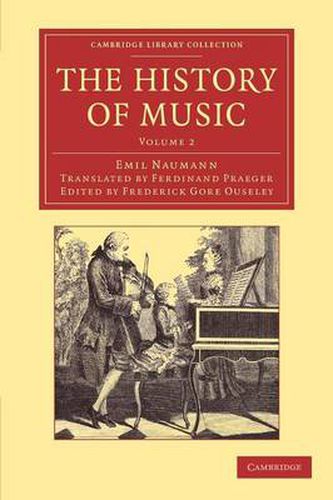Readings Newsletter
Become a Readings Member to make your shopping experience even easier.
Sign in or sign up for free!
You’re not far away from qualifying for FREE standard shipping within Australia
You’ve qualified for FREE standard shipping within Australia
The cart is loading…






Scholar and composer Emil Naumann (1827-88) studied with Mendelssohn, and his compositions reflect the style of his teacher. He published several works on musical aesthetics and history, of which Illustrierte Musikgeschichte, written between 1880 and 1885, is his best known. It went through many editions and this English translation, first published in 1888, was prepared by the composer, pianist and writer Ferdinand Praeger (1815-91). To rectify the work’s marked neglect of English music, chapters were added by its editor, the eminent Victorian musician Sir Frederick Gore Ouseley (1825-89), Professor of Music at Oxford. Lavishly illustrated and with musical examples throughout, this two-volume history was intended to ‘aid in fostering ever-increasing interest in the most emotional and cherished of all the arts’. Volume 2 covers the eighteenth and nineteenth centuries, and includes an index.
$9.00 standard shipping within Australia
FREE standard shipping within Australia for orders over $100.00
Express & International shipping calculated at checkout
Scholar and composer Emil Naumann (1827-88) studied with Mendelssohn, and his compositions reflect the style of his teacher. He published several works on musical aesthetics and history, of which Illustrierte Musikgeschichte, written between 1880 and 1885, is his best known. It went through many editions and this English translation, first published in 1888, was prepared by the composer, pianist and writer Ferdinand Praeger (1815-91). To rectify the work’s marked neglect of English music, chapters were added by its editor, the eminent Victorian musician Sir Frederick Gore Ouseley (1825-89), Professor of Music at Oxford. Lavishly illustrated and with musical examples throughout, this two-volume history was intended to ‘aid in fostering ever-increasing interest in the most emotional and cherished of all the arts’. Volume 2 covers the eighteenth and nineteenth centuries, and includes an index.